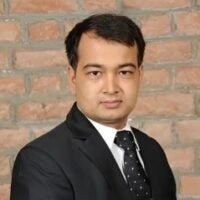This is the story of how an e-mail newsletter helped facilitate a great public work.
It started when the Arizona Department of Transportation (ADOT) suggested a four-lane highway to enhance safety and mobility on State Route 179, a state-designated scenic road in Sedona.
Many people were for it, but some citizens protested the plan. Among other things, they wanted to maintain the beauty of Arizona’s Red Rock Country.
ADOT knew it had to win people over, while considering their views. So it started an e-mail newsletter, SR 179, in August 2003.
The e-zine, which was sent once or twice a month based on necessity during the planning process, served multiple goals. On the one hand, it publicized events, helped the public understand complex issues.. promoted workshops where people could submit ideas and highlighted educational forums, like the one covering the effect of the planned roadway on tourism and the economy.
Also included were profiles of the Project Team members. and a section titled Highway 101 that educated citizens on the basics of road design.
But it also invited citizens to get involved.
“We had a lot of links in the newsletter to the Web site,” says Mary Schnack, communications manager for the State Route 179 project management team, hired by ADOT. “Subscribers could fill out evaluation forms, see maps or get materials regarding the project. The newsletters also encouraged readers to give us feedback.”
Schnack adds that there were “comment cards and links to surveys that they could fill out and submit.” And that was important.
“Some people don’t like going out at night or going to meetings, but if they can give feedback on the computer, anonymously, we wanted to give them the opportunity to do it that way,” she continues.
The circulation, which started at under 1,000, is now over 3,000. The recipients include citizens, legislators, members of the county and city government, the Federal Highway Administration, U.S. Forest Service and the media.
“I’d say we’ve plateaued now because the main push of community involvement, the planning stage, is over,” says Schnack. However, the newsletter will continue until the project is completed in the summer of 2008.
The Biggest Challenge
Schnack admits that the community didn’t look favorably upon ADOT or its plans in a favorable manner in the beginning. The newsletter had to overcome that distrust.
“Our biggest challenge was to always have the right tone in the newsletter,” Schnack says. “We wanted the community to see that they could trust ADOT. There was a concern that ADOT was just doing this to appease them and that ADOT had no plans to listen to their input. So we were always trying to build trust so they knew ADOT was listening.”
The process of building trust was enhanced by showing the community that ADOT moving on to the next step in the process, and that the community voices had been heard in the prior step. The newsletter featured unbiased information, not ADOT opinions on the safety of four-lane highways.
“People saw that and said, ‘Wow you aren’t taking a position,’” Schnack says.
Schnack and her team decided to use e-newsletters for several reasons. “I love e-newsletters, they’re a quick read and a good way to keep people in touch with progress,” she says.
And not only do they keep readers informed on the progress, they informed them on what was decided if they missed a meeting.
Meeting Goals
One goal of the e-newsletter was to reach people who may only have had a few minutes to give to the project as well as those who had much more time to contribute. Those with limited time could provide feedback through the Web site, or connect through a project hotline or the project office. For those with more time, ADOT promoted events and workshops.
For Schnack, the e-newsletters have succeeded because of the involvement process and the resulting support for the Preferred Planning Concept being pursued by ADOT. Better yet, individuals who began the process with very different viewpoints on how to handle it overcame issues of trust and agreed to a plan between the community and government agencies.
Schnack also has sent a hard-copy newsletter on a limited basis. Initially, it went out six times year and now appears two or three times a year. “It is expensive compared to an e-newsletter,” she says. “We sent out 15,000 so there’s a cost for printing and postage and you’re really not sure if they get read. With the e-newsletter you knew you were sending it to people who wanted it because they subscribed. “
Looking Ahead
With the planning stage behind and the design stage ahead, the frequency of the e-newsletter has been scaled back to once per month. “It’s a dormant period now for the public,” Schnack says. “We’ve gotten their input and they’ve given us the preferred plan. Now the engineers and designers need to work. But we still keep touching base with the community to let them know where we are with the design.”
In addition to just touching base, another use has arisen for the e-zine. An evaluation form of the NBIP is being distributed to team members and the community-at-large through the e-newsletter and the Web site.
The evaluation asks what public outreach activities provided the most, and least, useable data for decision-making; which visual materials were the most beneficial; how impressions of the process changed and what could have been done differently.
As for the future, Schnack sees the e-newsletter as a key communication tool through the SR 179 construction phase for informing residents about construction updates, lane closures and traffic snarls. “We’re still using them but now they’re basically just to show that we’re still there, and we still care,” she says.
 Network
Network

